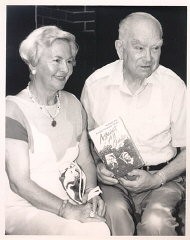You searched for: ���������������qee9.com������������������������6������S2O
<< Previous | Displaying results 51-75 of 267 for "���������������qee9.com������������������������6������S2O" | Next >>
-
The Normandy beach as it appeared after D-Day
PhotoThe Normandy beach as it appeared after D-Day. Landing craft on the beach unload troops and supplies transferred from transports offshore. Barrage balloons hover overhead to deter German aircraft. Normandy, France, undated (after June 6, 1944).

-
British troops land on the beaches of Normandy on D-Day
PhotoBritish troops land on the beaches of Normandy on D-Day, the beginning of the Allied invasion of France to establish a second front against German forces in Europe. Normandy, France, June 6, 1944.

-
US troops wade ashore at Normandy on D-Day
PhotoUS troops wade ashore at Normandy on D-Day, the beginning of the Allied invasion of France to establish a second front against German forces in Europe. Normandy, France, June 6, 1944.
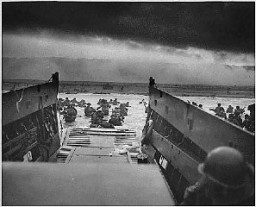
-
Anonymous Girl Diarist from the Lodz Ghetto
ArticleDiaries bear witness to some of the most heartbreaking experiences of the Holocaust. Read excerpts from the diary of an anonymous child in the Lodz ghetto.
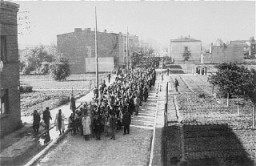
-
Jewish Brigade Group
ArticleThe Jewish Brigade Group of the British army was formally established in September 1944. It included more than 5,000 Jewish volunteers from Mandatory Palestine.
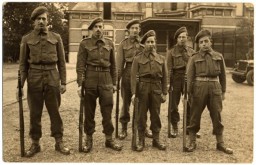
-
Fire Oaths
Article“Fire Oaths” were statements that declared why the works of certain authors were thrown into the flames during the 1933 burning of books under the Nazi regime.

-
Documenting Liberation: J Malan Heslop
ArticleLearn about J Malan Heslop, one of the first Allied photographers in the Army Signal Corps to document evidence of Nazi crimes.
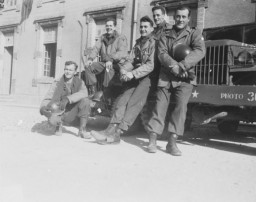
-
Documenting Liberation: Arnold E. Samuelson
ArticleArmy Signal Corps photographer Arnold E. Samuelson documented Allied military campaigns, Nazi crimes, and the plight of concentration camp prisoners.

-
Babenhausen Displaced Persons Camp
ArticleAfter WWII, many Holocaust survivors, unable to return to their homes, lived in displaced persons camps in Germany, Austria, and Italy. Read about Babenhausen DP camp.
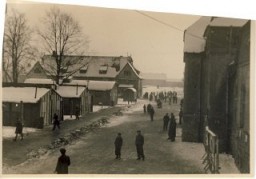
-
Bensheim Displaced Persons Camp
ArticleAfter WWII, many Holocaust survivors, unable to return to their homes, lived in displaced persons camps in Germany, Austria, and Italy. Read about Bensheim DP camp.
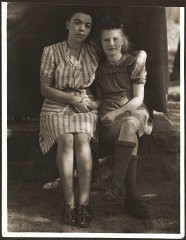
-
Twelfth Army Group Situation Map for D-Day
PhotoDated June 6, 1944, this US Twelfth Army Group situation map shows the presumed locations of Allied and Axis forces on D-Day, when Allied troops landed on the beaches of Normandy. Drafted during the war, the content in this historical map reflects the information that operational commander, General Omar N. Bradley, would have had on hand at the time.
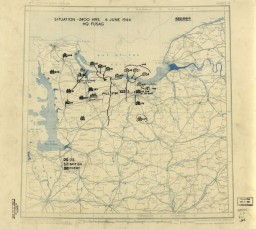
-
Evian Conference
Timeline EventJuly 6-15, 1938. On this date, delegates from 32 countries attended the Evian Conference in France to discuss the growing refugee crisis.
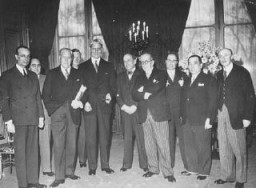
-
Plundering of the Institute for Sexual Science
PhotoA newspaper clipping with the headline "Against the Un-German Spirit" announces the plundering of the Institute for Sexual Science. The photo shows students marching to the institute's entrance before the looting began on May 6, 1933. The institute's books and documents were among those targeted during the Nazi book burnings.
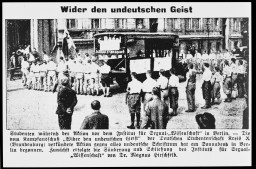
-
Adolf Hitler
SeriesRead a series of articles about Adolf Hitler's ideology and strategies. Under Hitler, the Nazi regime was responsible for the mass murder of 6 million Jews and millions of other victims
-
The 4th Infantry Division during World War II
ArticleThe 4th Infantry Division participated in major WWII campaigns and is recognized for liberating the Haunstetten subcamp of Dachau.
-
The 29th Infantry Division during World War II
ArticleThe 29th Infantry Division participated in major WWII campaigns and is recognized for liberating Dinslaken, a civilian labor camp, in 1945.
-
The 103rd Infantry Division during World War II
ArticleThe 103rd Infantry Division participated in major WWII campaigns and is recognized for liberating a subcamp of Kaufering in 1945.
-
The 3rd Armored Division during World War II
ArticleThe 3rd Armored Division participated in major WWII campaigns and is recognized for liberating the Dora-Mittelbau concentration camp in 1945.

-
Page 12 of passport issued to Setty Sondheimer
DocumentTransit visa in a passport issued to Setty Sondheimer, a German citizen. This visa, issued on August 6, 1940, enabled her to travel through Japan en route to Surinam, Curacao, or other Dutch colonies in the Americas. These plans were disrupted when travel across the Pacific Ocean was forbidden following U.S. entry into World War II. Setty remained in Japan until she was able to emigrate to the United States in 1947. [From the USHMM special exhibition Flight and Rescue.]
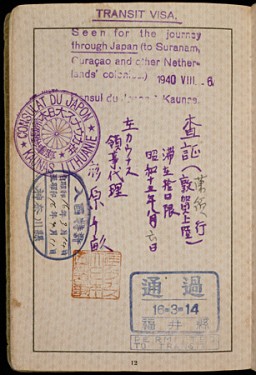
-
Polish citizenship certificate issued to Samuel Solc
DocumentPolish citizenship certificate issued to Samuel Solc on December 16, 1939, by the Britannic Majesty's Legation in Kovno, charged with representing Polish interests in Lithuania. Samuel decided to emigrate to Palestine in late 1939. His journey lasted over two years and took him through eight countries. Samuel arrived in Palestine on February 6, 1942, after stays in Lithuania; Kobe, Japan; Shanghai, China; and Bombay, India. [From the USHMM special exhibition Flight and Rescue.]
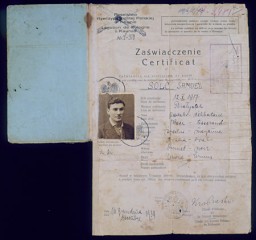
-
Polish citizenship certificate issued to Samuel Solc
DocumentThis page of a Polish citizenship certificate issued to Samuel Solc contains two visas. The first (left), stamped by the British Passport control in Shanghai, allowed Samuel to travel to Palestine via Burma, India, Egypt, and Rangoon. The second visa (right) bears the British Mandate "Government of Palestine" stamp, dated February 6, 1942, and allowed Samuel to remain in Palestine permanently. [From the USHMM special exhibition Flight and Rescue.]
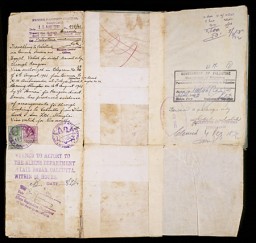
-
Evian Conference fails to aid refugees
FilmDelegates of 32 countries assembled at the Royal Hotel in Evian, France, from July 6 to 15, 1938, to discuss the problem of Jewish refugees. The refugees were desperate to flee Nazi persecution in Germany, but could not leave without having permission to settle in other countries. The Evian Conference resulted in almost no change in the immigration policies of most of the attending nations. The major powers--the United States, Great Britain, and France--opposed unrestricted immigration, making it clear…
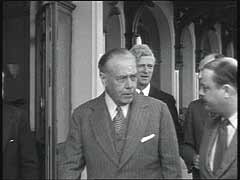
-
Auschwitz I camp, 1944
MapSelected Features 1. Camp Commandant's House 2. Main Guard House 3. Camp Administrative Office 4. Gestapo 5. Reception Building/Prisoner Registration 6. Kitchen 7. Gas Chamber and Crematorium 8. Storage Buildings and Workshops 9. Storage of Confiscated Belongings 10. Gravel Pit: Execution Site 11. Camp Orchestra Site 12. "Black Wall" Execution Site 13. Block 11: Punishment Bunker 14. Block 10: Medical Experiments 15. Gallows 16. Block Commander's Barracks 17. SS Hospital

-
A US soldier stands among the corpses of prisoners exhumed from a mass grave near Nammering
PhotoA US soldier stands among the corpses of prisoners exhumed from a mass grave in a ravine near Nammering. On April 19, 1945, a freight train with nearly 4,500 prisoners from Buchenwald pulled onto the railroad siding at Nammering. Hundreds of prisoners who had died on the train were buried in the mass grave along with the prisoners who were forced to carry the corpses to the ravine and were then shot. Germany, ca. May 6, 1945.
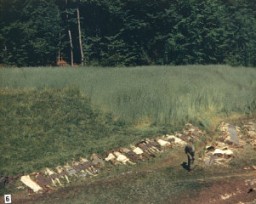
-
Amalie and Norman Salsitz with a copy of their book
PhotoJune 6, 1991, photograph showing Amalie and Norman Salsitz with a copy of their book, Against All Odds. With the end of World War II and collapse of the Nazi regime, survivors of the Holocaust faced the daunting task of rebuilding their lives. With little in the way of financial resources and few, if any, surviving family members, most eventually emigrated from Europe to start their lives again. Between 1945 and 1952, more than 80,000 Holocaust survivors immigrated to the United States. Norman was one of…
